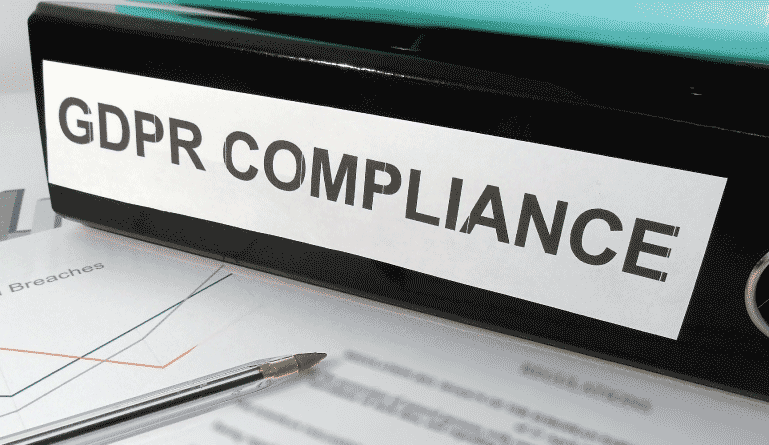Regarding GDPR compliance, one of the most at-risk sectors is human resources. HR departments regularly collect large volumes of sensitive data like medical records and bank account details. Yet, research shows that 76% of HR workers have breached GDPR in the last year.
Organizations need to immediately shore up their security and compliance infrastructure to adhere to GDPR – i.e., the EU’s General Data Protection Regulation specifies data subject (employee) rights about how their information is handled and legally enforceable obligations for data collectors (employers). Learn the steps to achieve GDPR compliance in your HR function.
Understanding GDPR Requirements for HR Tech
The General Data Protection Regulation (GDPR) outlines specific requirements for HR tech systems to adhere to. Here are its fundamental tenets that demand your attention as an HR leader:
1. Lawful basis for processing
GDPR mandates that HR tech systems have a lawful basis for processing personal data. You must identify the legal grounds for processing employee data, such as contractual necessity, compliance with legal obligations, or consent.
2. Data minimization and purpose limitation
HR tech systems should only collect and manage personal data necessary for specific purposes. Avoid excessive data collection and ensure that all processing aligns with the stated intent.
3. Data security and integrity
GDPR requires you to have in place appropriate technical and organizational measures to ensure the security and integrity of personal data. This encompasses encryption, access controls, and regular security assessments.
4. Individual rights
Employees have certain rights over their data, including the right to access, rectify, and erase their information. Therefore, your systems must facilitate exercising these rights and promptly respond to requests.
Assessment and Gap Analysis
Next, you need to review your HR data processing operations, security standards, and documentation to assess their alignment with GDPR (or the lack of it).
Start by evaluating your systems’ data collection processes, storage mechanisms, and access controls. Identify areas where personal data is stored, processed, and transferred, ensuring alignment with GDPR requirements – you may need to contact your HR software vendors for this. Document everything and analyze existing policies, procedures, and archival mechanisms.
This helps identify gaps in compliance, such as outdated privacy notices, inadequate data security, or the absence of data subject rights fulfillment.
Develop an action plan to address identified gaps – for instance, updating policies and processes, changing encryption standards, and implementing tools that make it easier to manage data subject rights.
Data Mapping and Categorization
To ensure data compliance, you must know what data originates, where, and for which data flows. List all HR systems, databases, and repositories where employee data is stored or processed, including time & attendance software, payroll systems, and HRIS. Diagram the flow of data – this allows you to visualize (and share insights on) data inputs, processing, storage, and data outputs.
According to GDPR, data must be appropriately classified as identifiable and non-identifiable information. Identifiable data should be further classified based on its nature and purpose, such as employee identifiers (e.g., name, employee ID), contact information, employment history, and performance evaluations. This facilitates data retention policies in the long term.
HR leaders need to pay special attention to sensitive personal data. Demarcate and label these within your HR systems (e.g., medical records, disciplinary actions, and diversity information) so they are easier to retrieve and remove.
Finally, conduct regular reviews and updates of your data mapping and categorization efforts to account for changes in HR systems.
Implementing Strong Data Protection Measures
Organizations need effective – and compliant –data protection strategies to protect the data you’ve identified and indexed. This will vary based on the nature of your business, but will typically include:
- Robust encryption algorithms (e.g., AES-256) to encrypt sensitive data fields
- Tokenization, data masking, and pseudonymization to anonymize employee data
- Role-based access control (RBAC) and multi-factor authentication (MFA) to prevent unauthorized access
- Data minimization principles, purging unnecessary or obsolete data, and strict data retention schedules
- Secure communication protocols such as HTTPS, SSL/TLS, and SFTP
- The use of data loss prevention (DLP) tools to protect against breaches
These measures ensure GDPR compliance for HR systems and help secure your organization against cyber attacks. This is particularly important given that 80% of HR professionals are at risk of a severe data breach.
Data Subject Rights and HR Processes
One of the fundamental tenets of GDPR compliance is guaranteeing that employee rights to their data (access, rectification, deletion) are respected. For this, companies need documented procedures for handling data subject access requests (DSARs) – i.e., workflows specifying the submission, acknowledgment, and processing of these requests.
Designate specific individuals or teams responsible for managing DSARs and ensure they are adequately trained on GDPR.
Using a centralized help desk to manage requests efficiently is a good idea. This allows for streamlined tracking, processing, and response management. According to GDPR rules, access requests must be resolved promptly, usually within one month of receipt; a single, unified system is crucial to ensure this.
Throughout the process, keep data subjects (i.e., your employees) informed about the status of their access requests, including any delays or additional information required. And when access is available, it should be in a commonly used electronic format. Otherwise, they will need help to exercise their data rights to review, amend, or request the deletion of their information.
Vendor and Third-Party Data Processor Compliance
With HR functions increasingly digital, it’s necessary to establish clear contractual agreements and data processing agreements (DPAs) that outline GDPR compliance expectations and responsibilities from your vendors.
One key aspect of ensuring compliance is understanding the software supply chain, which can be facilitated by the Software Bill of Materials (SBOMs).
SBOMs provide transparency into the software components and dependencies used within HR systems, allowing CHROs to assess potential security vulnerabilities and compliance risks. HR SBOMs must be maintained and kept up-to-date, enabling proactive identification and mitigation of risks in the supply chain.
Also, implement mechanisms for monitoring vendor activities regularly to ensure ongoing (as opposed to one-time) compliance with GDPR. This means assessing data transfer protocols, checking for subcontractor oversight, and conducting regular audits to verify compliance with GDPR requirements.
If you do need to transfer personal data to vendors and third-party processors outside the European Economic Area (EEA), use tools like standard contractual clauses (SCCs) or binding corporate rules (BCRs) to ensure lawful data transfers and protection of data subjects’ rights. Contrarily, you risk having employee data handled outside the purview of GDPR jurisdiction.
What Happens if There is a HR Data Breach?
As per the GDPR, the data collector’s responsibilities continue in the event of a data breach. CHROs must invest in cyber attack response mechanisms to comply, which would streamline the post-breach notification process for both supervisory authorities and employees.
You need to alert supervisory authorities immediately and, where feasible, within 72 hours of becoming aware of the breach. If this isn’t possible, the organization must explain the delay. Include all the relevant details in your notification, like the nature of the breach and the approximate number of data subjects affected.
Further, if the breach risks employee safety (e.g., having a bank account detail stolen), you must urgently communicate with your data subjects. The GDPR states that you don’t have to do this if the personal data is anonymized or encrypted – but notifying supervisory authorities is still necessary.
Ultimately, complying with GDPR in HR systems entails a substantial compliance burden for HR leaders, which calls for a well-articulated, continually updated strategy. You can navigate these regulations through cross-functional collaboration between HR, IT, and legal teams and build trust and credibility.





